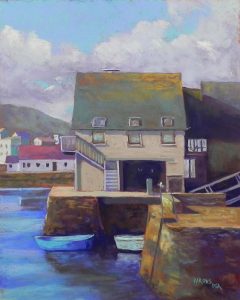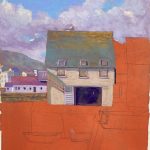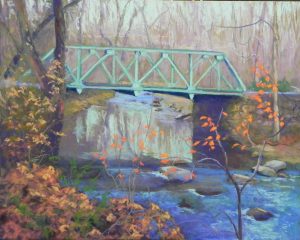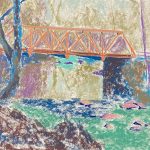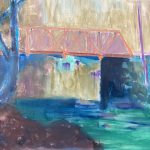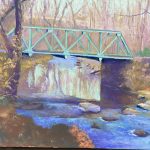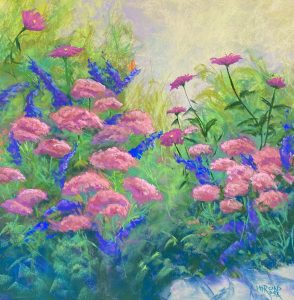I spent four days in the last two weeks working on this painting from our August trip. I used three different photos and moved things around until I was happy with the composition. A main challenge was that the large stone pier in the foreground was more in the center and took up and enormous amount of space! And it was really dark. So I had to move it over.
I decided to do the painting on Lux Archival to see whether I want to invest in more paper for my “regular” paintings (I’ve decided that I do). As I’ve noted, I don’t think there is much tooth as the UART. So I decided to tint the paper with acrylic ink. This time (unlike in the past), I used the ink straight out of the bottle with a brush and it created a beautiful terra cotta surface that was perfect for this rather cool painting with lots of neutrals. The color is darker than what appears in this cell phone image. But you can see that it was easy to draw on it and see the pencil marks. I have to say that I loved working on the surface and the color. Of course, I was doing buildings and boats–no trees or shrubbery. I made sure to leave lots of little pieces of red showing through (particularly in the whitish boat).
I’ve noted the challenge of the pier in front. The large dark open space in the building was also a potential problem. But I used various colors, indicated small lights from a back window, then put a lovely little post in front of it, that has a nice edge of light on the left side. At the very end, I added the sea gull in front of it as well, thus making it a good backdrop for details of interest.
A major problem intially was that the turquoise boat was too much like the water around it. I added the violet from the clouds in lighter places and some of the green from the roof and darkened the blue around it. Now, I’m happy with it.
This was a challenging painting but it was also a happy picture to work on. Our visit to Orkney was probably the highlight of the trip as it was so beautifully sunny with lovely clouds. If only Shetland could have been this way!
PS. I took the sea gull from a painting I have up in the studio of Port Clyde, Maine. That one was much larger. For this guy, I used NuPastels finishing him with the pointed edge of a while (completely unused) stick!

